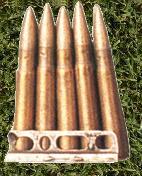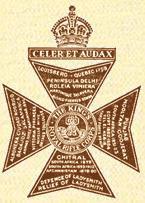




A BRIEF HISTORY OF THE KRRC IN WORLD WAR TWO
Although the history of the KRRC is fascinating, glorious and extensive from 1755 onwards, I am focussing on the KRRC in the Second World War; mostly because this is the time period that the game this site was written for, WWIIOL is a Second World War simulation!
Motor Battalions
In 1937 the development of armoured formations necessitated highly mobile and well-trained infantry to support the armour and work in close co-operation with them. Speed, long-range communications and the ability to work independently at platoon and company groups were required. This was a very similar situation to that which the Regiment had fulfilled with such distinction in its early years in North America, Spain and more recently in South Africa. The KRRC and the Rifle brigade were selected to become motor battalions, an honour in accord with their history and traditions.
In 1938 the 2nd Battalion was re-organised at Aldershot as a motorised unit. The 1st battalion in Egypt soon followed. By 1941, all 3 of the territorial regiments of the KRRC (Queen Victoria Rifles, Queens Westminsters and the Rangers) had two motorised battalions. The 1st Motor training battalion was also formed.
Before Pearl Harbour, 17 American citizens were granted commissions in the KRRC. This was a unique distinction and a link with the 60th’s original roots as a Royal American Regiment. Four were killed in the war and several were wounded.
A British rifleman in combat dress, 1940, minus rifle.
The Defence of Calais
In May 1940, a Green Jacket Brigade (2nd KRRC, 1st RB and 1st Queen Victoria's Rifles) crossed the Channel at the shortest notice to assist the evacuation of the BEF from Dunkirk, by holding Calais against a thrust by 2 German armoured divisions. After four days of bitter fighting with inadequate Anti-Tank weapons they were gradually overpowered after suffering heavy losses and with no ammunition left.
On a memorable occasion Churchill wrote that it had “added another page to the glories of the Light Division”. The German commander that accepted the final surrender of the heavily depleted and ammunition-less brigade asked the brigade commander to bring out the heavy guns. The commander replied “I’m sorry, sir, I can’t do that. There aren’t any heavy guns.” The German commander was quite taken aback and could not work out how three battalions had held up his two armoured divisions for three days with nothing heavier than Boyes Anti-Tank rifles!
(I intend to do a more detailed account of the battle for Calais at some stage but this will have to do for now.)
The Desert War
The 1st Battalion was the first Green Jacket Motor Battalion in the Desert and was guarding the Western frontiers of Egypt when, in June 1940, Italy declared war. In April it was joined by a detachment of the Royal Rhodesia Regiment. The Rhodesian Company became one of the finest companies in the battalion. In the first seven months of this war, the Italian army was destroyed. Four KRRC battalions took part in this campaign, fighting in close association with the 7th Armoured Division and sharing their “Desert Rat” badge. The 1st KRRC fought almost to the last at Sidi Rezegh, only 55 all ranks escaped in the battle where the regiment’s 23rd VC was won. The 1st, 2nd and 12th fought at Alamein and through to the final battles in Tunisia.
A rifleman in the desert, 1940-1943. Sketch by Capitain Oswald Birley, MC.
War in Greece and Crete
In the spring of 1941 the 9th KRRC (The Rangers) fought a desperate rearguard action in Greece. Their gallant stand in the Florina Cap inflicted heavy casualties on the Germans. The remainder of the Battalion with few arms, little ammunition and no air support fought until overwhelmed in Crete. 14 escaped. Towards the end of the war until 1946, the 11th KRRC (Queens Westminsters) fought the communist rebels in Greece.
Italian Campaign
Three battalions of the KRRC fought in Italy. The 1st Battalion, after a year of determined fighting, had reached the Austrian Frontier when Germany surrendered in May 1945. The 2nd Battalion was withdrawn to England in early 1944 and later the 11th was withdrawn to Egypt.
North-West Europe
Two KRRC battalions, the 2nd and the 12th fought from the landings in Normandy in June 1944 to the surrender of the German army on Luneberg Heath on 5th 1945.
From 1939 to 1945 the Regiment had raised 8 battalions at various times; more than one thousand all ranks were killed and over 8 thousand were wounded or missing. The names of those who gave their lives are recorded on the Roll Of Honour book in Winchester Cathedral. On the quay at Calais stands a memorial to the three Green Jacket battalions who fought there in 1940.
Adapted with permission by David Blatcher from “The King’s Royal Rifle Corps (60th Rifles) Bicentenary Edition”, published 1955, which was kindly supplied by Colonel I H McCausland of the Celer et Audax club.


